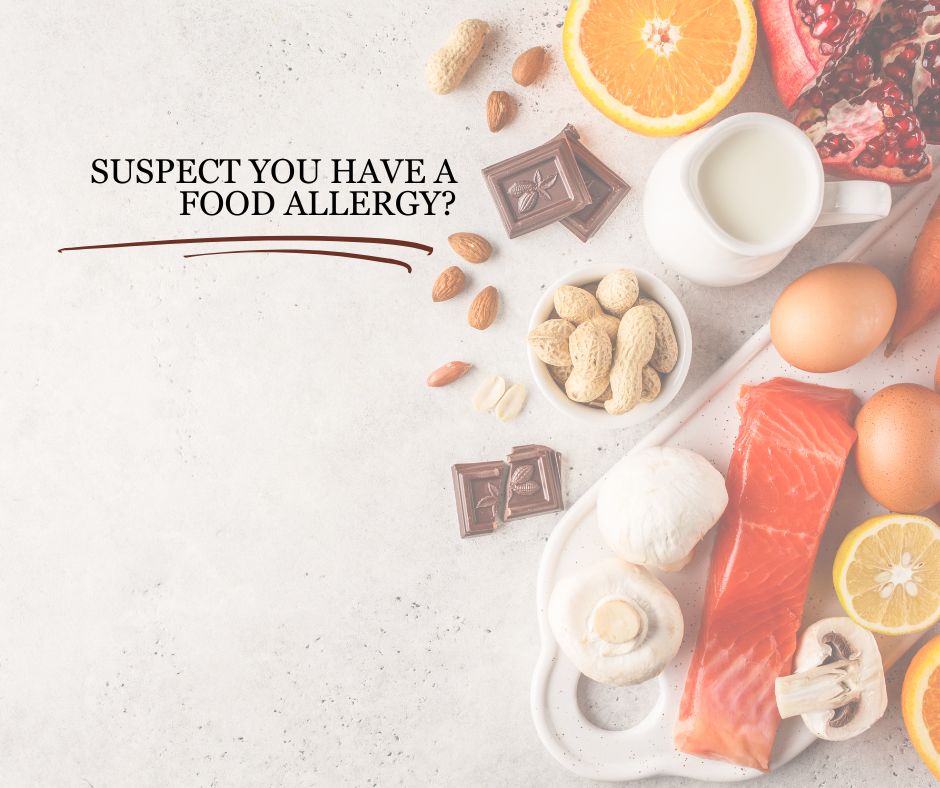Often people are reacting to food in one way or another and never realize it because the symptoms can range from being immediate to delayed up to 48 hours after eating the food. I’d like to clear up some of the confusion about food reactions.
How we react to a food depends on the type of antibody we make, and where in the body we are reacting. Often people are reacting to food in one way or another and never realize it because the symptoms can be delayed up to 48 hours after eating the food. Those hidden food reactions may be the underlying cause of many a mysterious symptom. Some reactions are allergies, others are sensitivities. All can make us miserable. All can be measured but we need to know which antibody is at play.
So let’s discuss the major ways we react to foods, keeping in mind that this is an emerging science with many theories.
• IgE: These are the immediate and acute reactions, such as the ones that people have to shellfish and peanuts, where the throat swells shut, lips get puffy and hives might appear. Allergists test for these reactions using skin scratch testing.
• IgA : These are reactions that occur in the lining of the digestive tract, mostly in the small intestine. Gluten allergies (to wheat, barley and rye) are almost always IgA reactions. IgA reactions tend to be digestive, such as bloating, constipation and diarrhea, although IgG symptoms can also manifest in the intestines.
• IgG: The “hidden” allergies that often don’t show a reaction until up to 48 hours after a food has been ingested,so it is hard to connect a certain food with a reaction. The symptoms tend to be low grade and chronic rather than acute, and show up as fatigue, headaches, muscle pain, foggy thinking, etc.
• IgG4: A more serious and permanent form of the IgG. This type of antibody is actually the body’s defense against flipping to the IgE acute reactivity antibody. If you have one of this type, be diligent in avoiding the offending food.
The tricky thing is that we can develop different types of reactions to the same foods. For example, dairy can be an IgA ,IgG, IGG4 or IgE reaction. Eggs, soy and corn are other common foods that can trigger various types of antibodies and therefore react in different ways. Read this testimonial about dramatic improvement after identifying the one food causing this woman’s distress. And no, it wasn’t gluten or dairy!
Not only do we develop different types of antibodies but we also react to foods in varying degrees, labelled food sensitivity versus food allergy.
Let’s take Celiac Disease, for example. Celiac Disease is a condition that affects the intestines. The villi, which are the small fingerlike projections in the small intestine, have lots of surface area for nutrients to be absorbed. Think of a shag rug. In Celiac Disease these villi flatten out, looking much like a berbercarpet. They can no longer assimilate nutrients as effectively because the surface area for absorption has decreased. Celiac Disease is clearly an allergy and a serious one at that.
Somewhere in the spectrum between Celiac Disease and a perfectly healthy digestive tract lining is a gray area of reactivity. This has been labelled Non-Celiac Gluten Sensitivity, which emerging research is revealing to be surprisingly common. Some estimate as high as 15 percent of the population.
Other food allergies are becoming better recognized as well, including dairy. Let me first clarify that lactose intolerance is not a dairy allergy. It’s the inability to digest the carbohydrate in milk, lactose, because of a missing enzyme. That enzyme is easily replaceable in the form of over the counter “lactaid” pills. Yogurt and “lactaid” milk products have pre-digested the lactose and can be used comfortably by those with lactose intolerance.
However, no amount of Lactaid will help someone with a dairy allergy. As I mentioned earlier, dairy allergies can take place anywhere: in the lining of the digestive tract (IgA), in the blood(IgG), and by the immune system(IgE).
The most common form of dairy allergy, the IgG and IgG4 reaction, is best identified through blood testing. The IgG allergies result from Leaky Gut, a condition where the lining of the intestinal tract changes from being an impermeable membrane to a permeable one. Food proteins can then pass or “leak” through the compromised gut membrane and go into the bloodstream. Once in the bloodstream, the immune system identifies the food protein as an invader and creates the IgG antibodies.
The most common causes of Leaky Gut include repeated antibiotic use, hidden infections of the gastrointestinal tract, chronic under-consumption of protein, long term use of steroid or non-steroidal medications, and excessive stress combined with a poor diet. We are now learning that GMO foods are probably contributing to IgG food allergies as well.
Wonder whether you might have some “hidden” food allergies? See if you have some of these common symptoms of IgG reactions:
• Fatigue for no reason
• Pinkish-purplish circles under the eyes (we call these “allergy shiners”) and many children have these!
• Puffiness under the eyes
• Horizontal creases in the lower eyelid
• Chronic fluid retention
• Chronic swollen glands
• Chronic bloating and gas
• Headaches
• Joint pain, body aches
• Acne, eczema, hives, itching, rashes
If you suspect you are reacting to food, consider working with a BeWell nutritionist who is well versed in food allergies and will help determine which test is most relevant for you. Using the holistic nutrition approach, she will help you correct underlying issues and resolve your digestive complaints. It’s well worth your time to improve you symptoms, digest your food and be able to adjust your diet to focus on foods that build you up rather than add stress to your body.
Choose Health!
Danielle Preissing, MS, CNS, LN





Add Comment